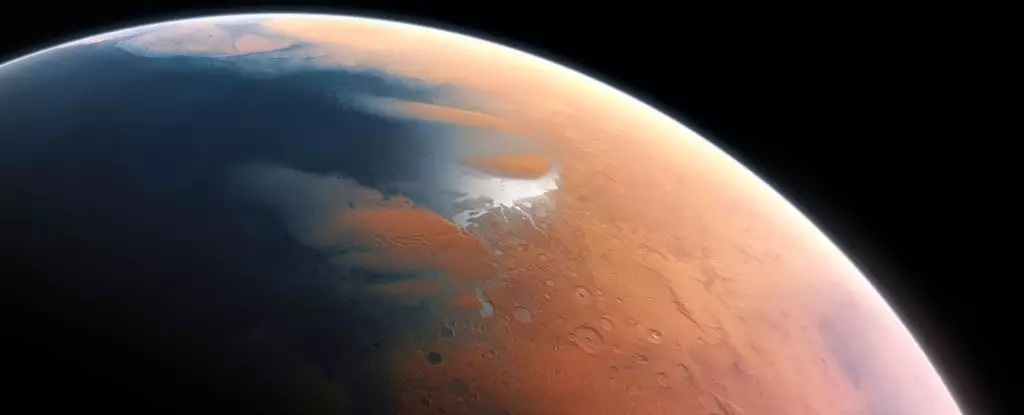For centuries, astronomers and scientists have been fascinated by the stark contrasts between Earth and its neighboring planet, Mars. Commonly perceived as a desolate land, characterized by dust storms and a barren landscape, recent studies challenge this narrative, suggesting instead that Mars was once a vibrant world with expansive bodies of water. Evidence indicates that, approximately four billion years ago, Mars was graced with oceans and lively ecosystems. Ground-penetrating radar has unveiled ancient features resembling beaches and river deltas on Mars, illuminating the argument for its historical wetness.
Benjamin Cardenas, a geologist at The Pennsylvania State University, remarks, “We’re finding places on Mars that used to look like ancient beaches and ancient river deltas.” This impactful recognition helps transform our understanding of Mars from a dry wasteland to a planet that potentially supported life through the existence of liquid water.
Utilizing advanced technologies like ground-penetrating radar (GPR), scientists have initiated a groundbreaking exploration beneath Mars’ surface. The data gathered from the Chinese National Space Administration’s Zhurong Mars rover presents compelling evidence of an ancient ocean dubbed Deuteronilus. This innovative radar technology allows researchers to transmit radio waves into the Martian ground, capturing reflections from subsurface structures. By analyzing these reflections, scientists can compile comprehensive three-dimensional maps of geological features, lifting the veil on the history buried beneath the reddish dust.
Jianhui Li and Hai Liu, leading the collaborative Chinese-American research team, have confirmed that the findings indicate sufficient water to fill a sizable ocean. Such revelations emerge from GPR data that suggests the presence of layers of material illustrating the appearance of ancient shorelines. The angle and orientation of these structures correspond to Earth’s historical beaches, echoing the familiarity of our own planet’s aqueous environment.
The implications of the newly established aquatic history are profound. The findings drive home the idea that Mars once boasted a significant water cycle that operated for millions of years, akin to Earth’s early days. Michael Manga, a geophysicist at the University of California, Berkeley, articulates the importance of such findings: “The structures don’t look like sand dunes. They don’t look like an impact crater. They don’t look like lava flows. That’s when we started thinking about oceans.” Striking similarities between the identified Martian features and Earth’s hydrological processes underscore the belief that our planetary neighbor was once a bustling aquatic environment, with an intricate interplay of waves and tides shaping its surface.
Moreover, the dynamic nature of such an ocean would have been vital for its evolution. Although Mars lacks a moon to control its tides like Earth, solar influences could still facilitate tidal movements. The interaction of wind with the surface of a large ocean could yield waves capable of sculpting the shoreline environment on Mars, further amplifying the plausibility of a marine ecosystem that served as a canvas for potential extraterrestrial life.
With the prospect of oceans discovered on Mars, scientists and astrobiologists face renewed optimism about the planet’s capacity to support life. Coastal zones emerging from a liquid environment are particularly compelling as potential habitats, combining the presence of water, land, and atmosphere. Manga highlights the significance of understanding when and where these environments existed as they inform future exploratory missions: “Shorelines are great locations to look for evidence of past life.”
This unraveling of Mars’ past opens avenues for exploration that could target these ancient aquatic areas, served by the intricate relationship between land and water, much like the origins of life on Earth. Additionally, recent research posits that much of Mars’ water may currently reside in vast, inaccessible subsurface reservoirs. If these resources are confirmed through further investigations, they may prove crucial in our quest to answer questions lingering about Mars’ habitability.
As scientists muster fresh evidence implicating historical oceans, the next challenge surfaces: validating the existence of these ancient maritime landscapes further. Research teams will need to engage in more extensive modeling and simulated explorations to understand the dynamics of Martian tides and waves.
In this chase to find Mars’ watery past, each new piece of data cultivates a deeper appreciation of the planet’s complex history. With every stride in exploration, Mars shifts from a once-perceived arid land to a potential cradle of life, where the echoes of ancient oceans invite not only curiosity but hope for discovering the signatures of past existence. Our planetary neighbor beckons, urging us to explore the depths of its fascinating, mysterious legacy.


Leave a Reply